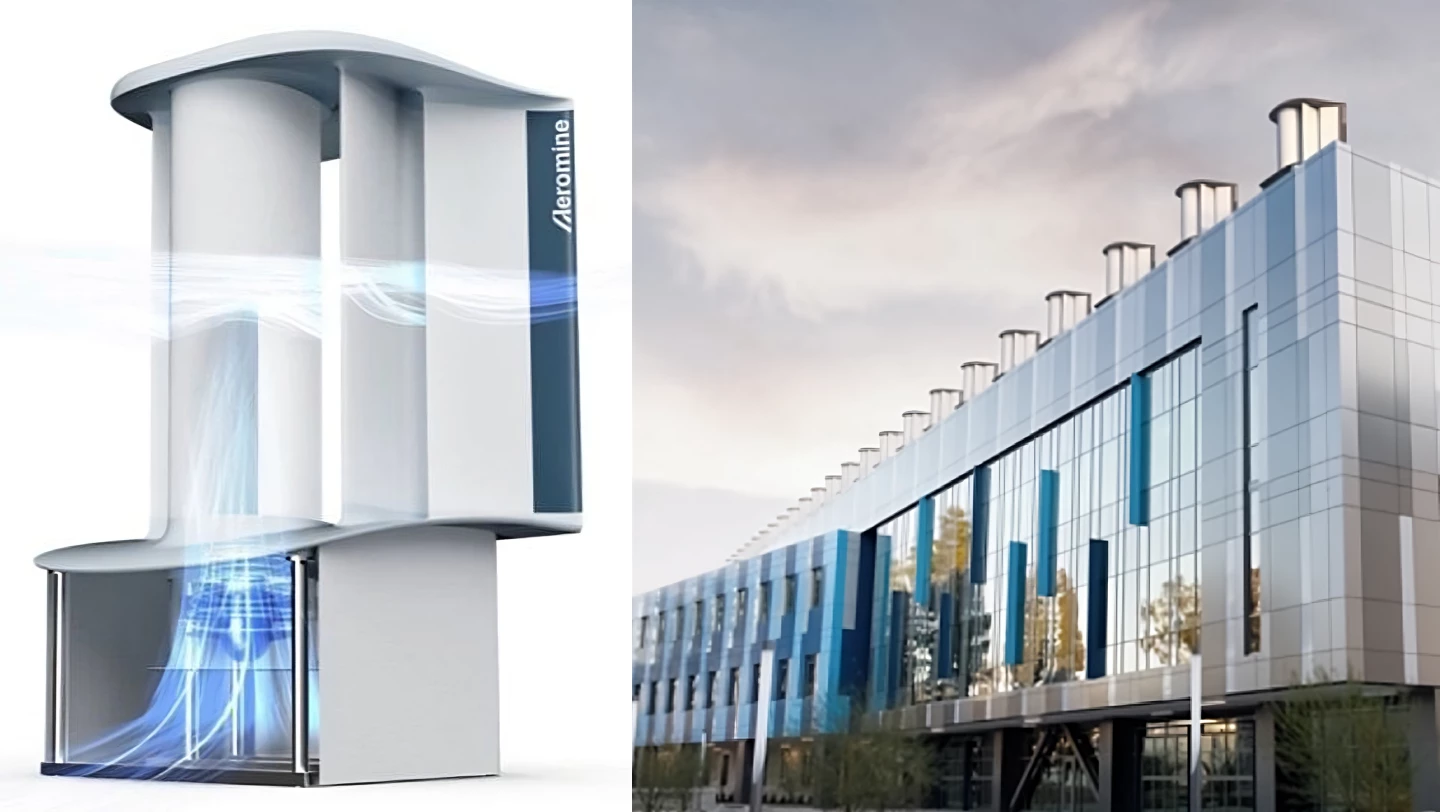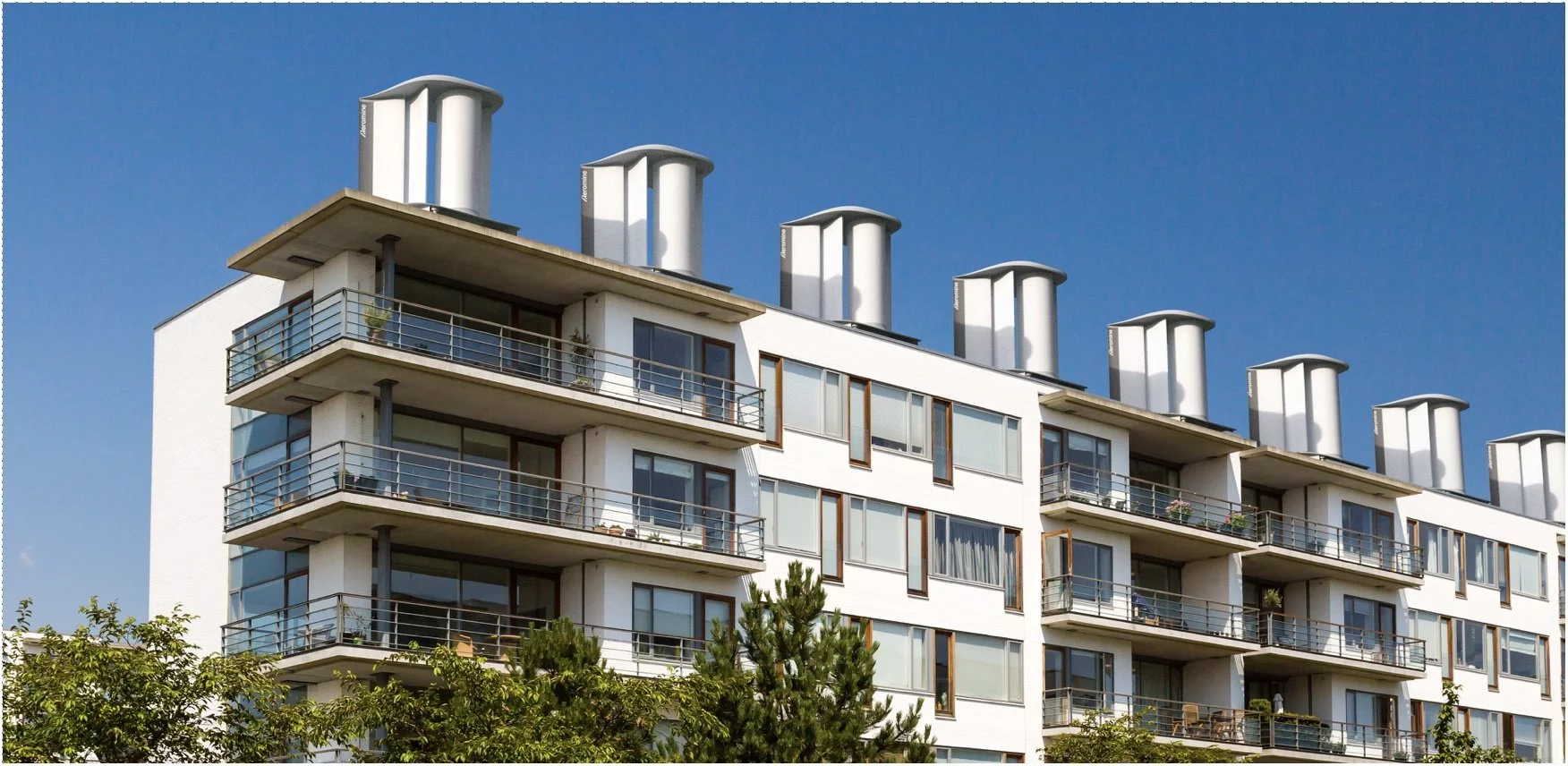Aeromine says its unique "motionless" rooftop wind generators deliver up to 50% more energy than a solar array of the same price, while taking up just 10% of the roof space and operating more or less silently. In independent tests, they seem legit.
Distributed energy generation stands to play a growing part in the world's energy markets. Most of this currently comes in the form of rooftop solar, but in certain areas, wind could definitely play a bigger part. Not every spot is appropriate for a bladed wind turbine, though, and in this regard, University of Houston spinoff Aeromine Technologies has designed a very different, very tidy form of rooftop wind energy capture that looks like it could be a real game-changer.
As with traditional wind turbines, size is key. So while Aeromine's wind energy boxes take up a relatively small footprint on your roof, they're still pretty bulky. The wings themselves are maybe 10 feet (3 m) high, at a rough guess, and looking at the latest imagery they're now sitting on top of boxes that might add another 6 ft (1.8 m) or more to their height – so they're no shrinking violets. On the other hand, they don't create the noise, or the constantly moving visual distraction of a regular, bladed turbine, so they may prove to be less unwelcome in populated areas.
They work differently too – kind of like a set of race-car spoiler wings sandwiched together facing each other, with a round pole in between them. Angled into the wind, these stationary wings generate a low pressure vacuum in the center of the device, which sucks air through perforations either in the wings themselves or in the round pole, which also aids in accelerating the ambient airflow over the wings.

So where's the turbine? Depending on the installation, it can either be at the bottom of that central pole, surrounded by a duct, or in more compact designs that sit right down on the roof instead of up on top of a box, the fan can be down in the roof of the building itself, in a pipe connecting either to that central pole or to hollow chambers in the perforated wings. Either way, the wings create a low-pressure zone, air is sucked through a tube to fill that low-pressure zone, and Aeromine places a relatively small, cheap internal propeller (perhaps 36 inches/91 cm in diameter) in that tube to run a generator.
It's very quiet, very safe and very cheap to build; you don't need any fancy materials like carbon fiber, there's nothing special about the fan itself, and the whole thing comes apart for transport and a relatively simple construction process on site.
Aeromine hasn't yet nominated a standard capacity for its devices in their latest iteration – indeed, we had to go digging to find much information at all about the device. But in a solution presented to the AFWERX Reimagining Energy challenge in January 2021, these units were each rated for 5 kW – pretty close to the output of a typical 21-panel, household rooftop solar system. Multiple units can of course be run along the leading edge of a building, spaced around 15 ft (4.6 m) apart, and each unit in this (now outdated) AFWERX challenge promised to generate around 14.3 MWh annually. Just for perspective, my 6.5-kW home rooftop solar system makes somewhere around 9 MWh a year.

The potential here is pretty clear; solar and wind work well in a complementary fashion. Solar's only generating during the sunniest hours, wind can be 24 hours but is totally dependent on conditions. The small rooftop footprint of an Aeromine system makes it possible to cover the rest of the roof in solar panels, then get some on-site battery storage happening and run a decent-sized business more or less off the grid.
So what are the downsides? Well, these things need to be installed in spots where the wind direction is pretty constant, because they don't angle themselves to catch a breeze – and they probably never will, since they're designed to be such a cost-conscious machine. Their height might make them a visual or civic planning issue in some areas, and what's more, they'll cast shadows, which will block the sun from reaching rooftop PV panels unless the building is oriented such that the sun comes from one side and the wind from the other. So there's certainly going to be a limited number of places where they'll work optimally in a hybrid system.
But that's about it at first glance. They're certainly cheaper, hardier, safer and less intrusive than windmill-style designs, and they offer a highly-accessible way to introduce reliable wind energy into a distributed power system.

Before getting too excited about any strange new wind energy tech, it's always worth revisiting Mike Barnard's excellent checklist to weed out dodgy wind power claims. Written in 2013, it's as relevant as ever today as more and more money flows into clean energy tech.
Aeromine fares well against the Barnard test. With the University of Houston behind it, it has also submitted its gear to the gold-standard Sandia National Laboratories for testing – indeed Sandia has been involved directly in the development. It claims to harvest no more than 1/3 to 1/2 of the Betz limit of potential wind energy.
A technical performance analysis prepared in partnership with Sandia, using wind tunnels at Texas Tech University, states that "by sweeping a large area of wind with a reliable design, AeroMINEs overcome the challenges that have plagued other distributed wind solutions and have hindered distributed wind from playing a significant role in energy markets." The report also notes a boost in energy extraction, coupled with some aerodynamic instability, when the airflow reaches the device from higher angles of attack.
Aeromine says that BASF is testing the system at its manufacturing plant in Wyandotte, Michigan – although it doesn't say how many units have been installed, or of what capacity. Hunting through the satellite overlays in Google Maps, it seems that the pilot test unit in the video above is situated right here, judging by the unique markings on the roof – but the satellite image isn't recent enough to show the wind power system, so we can't figure out much more.
We expect this extra-tall unit sitting on a box is simply a temporary prototype designed to be super-easy to add and remove, where the final product will sit flush against the roof and have its piping and turbine installed under the surface. We wish Aeromine would be more forthcoming in its marketing.
Either way, despite the limited information the company is willing to release at this point, this looks like it could be an impressive step forward for distributed rooftop wind energy. We hope Aeromine proves capable of scaling this tech up and making a serious contribution in the race to zero carbon.
Check out a short video from Sandia below.
Source: Aeromine via PR Newswire









